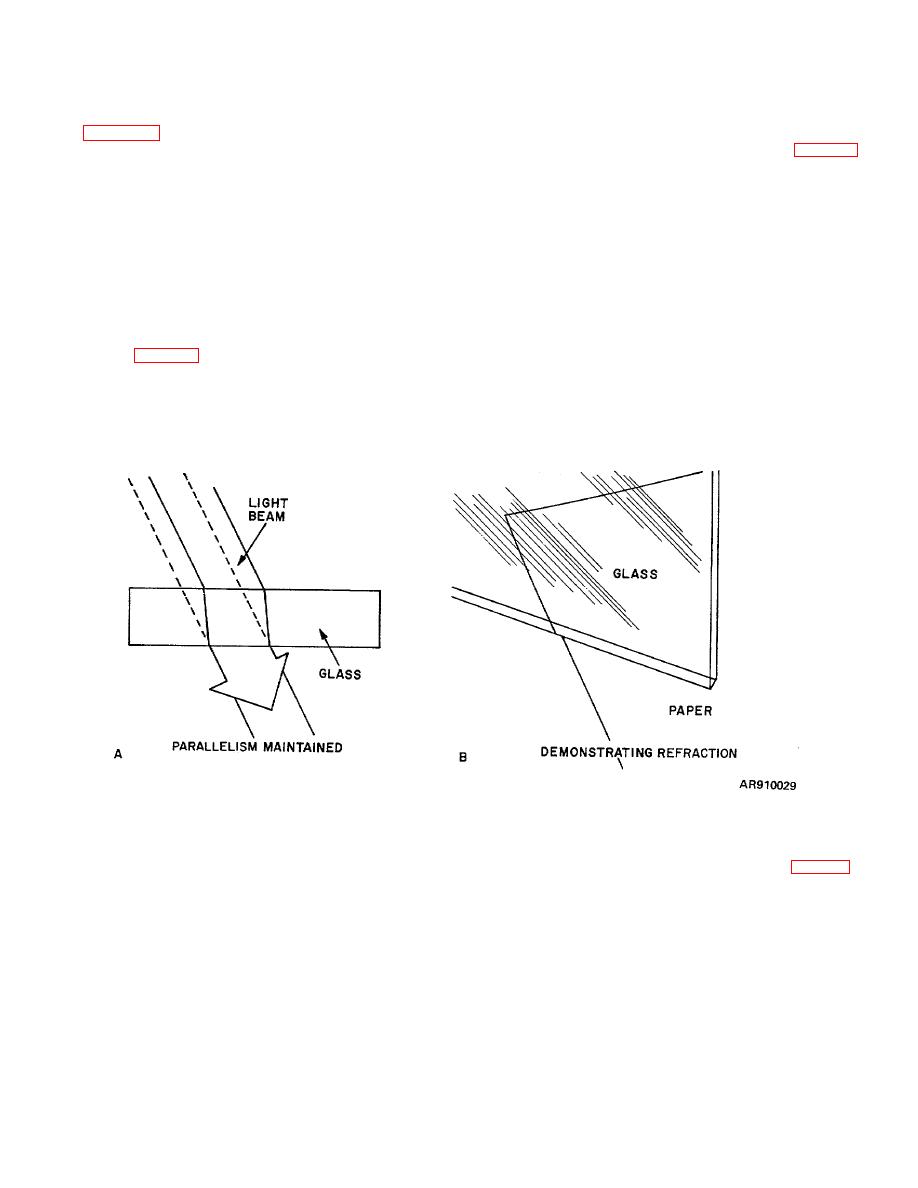 |
|||
|
|
|||
|
Page Title:
Figure 2-23. Effects of refraction. |
|
||
| ||||||||||
|
|
 TM 9-258
b. If the beam strikes the glass directly at right
The light follows its new course in a direct line when the
optical density of the medium is constant.
angles (or the normal), the light is not bent or refracted
d. Upon leaving the other surface of the glass
(A, fig 2-22).
Its speed is slowed down upon
plate, the light is again refracted or bent (B, fig 2-22).
encountering the' optically denser medium, but as the
The edge which entered the glass first traverses the
entire front strikes the glass at the same instant its path
glass first. Upon leaving the optically denser medium
is not deviated but continues through the medium in a
and entering the optically lighter medium (air), its path is
straight line. Upon reaching the other surface of the
deviated again. The effect is to swing the entire beam
glass, the beam enters the optically lighter medium, air,
away from the normal.
and resumes its faster speed in air.
c. If this beam of light strikes the glass at an angle,
e. Refraction may be visually demonstrated by
one of the edges of the wave front arrives at the surface
placing the straight edge of a sheet of paper at an angle
an instant before the other edge does and consequently
under the edge of a glass plate held vertically (B, fig 2-
its path through glass is longer, at this point, while
23). The straight edge of the sheet of paper will appear
entering glass. The edge of the front arriving at the glass
to have a jog in it directly under the edge of the glass
first is slowed down upon entering the optically denser
plate. That portion of the paper on the other side of the
medium (B, fig 2-22). When the other edge enters the
glass will appear to be displaced due to refraction. As
glass, it is slowed down in the same manner but an
the sheet of paper is moved to change the angle of its
instant later, having traveled with greater speed in air,
straight edge, the amount of refraction will be increased
the effect is to swing the entire beam toward the normal.
or decreased. If the straight edge of the paper is viewed
This bending of light is termed refraction.
at right angles to the surface of the glass, there will be no
refraction.
Figure 2-23. Effects of refraction.
toward the normal. In passing from a medium of greater
2-11. Law of Refraction.
optical density to a medium of lesser optical density, the
a. The law of refraction can be stated as follows: In
path of light is deviated away from the normal (fig 2-24).
passing from a medium of lesser optical density to one of
greater optical density, the path of light is deviated
2-16
|
|
Privacy Statement - Press Release - Copyright Information. - Contact Us |